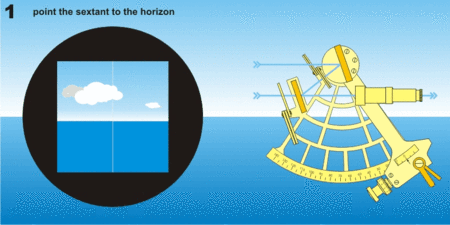Even though astronomers use scales such as arcseconds and arcminutes to measure certain distances between stars, the main tool of celestial navigation, the sextant, is only able to measure arcminutes. The sextant uses reflection in order to find the angle of celestial objects. Traditionally, the sextant has two mirrors. The horizon mirror is stationary and keeps half of what the observer sees to be the horizon line. The second is called the index mirror. This mirror pivots until the celestial object comes into view and meets the horizon line. It is then necessary to rotate the sextant in order to ensure the correct angle has been found. The celestial object should move in a “u” shape from side to side as the sextant is rotated side to side. After the correct angle is found, the observer may read the angle above the horizon the celestial body is at on the bottom of the incidence bar, which is connected to the incidence mirror and pivots with it. The diagram below illustrates the basic operation of a traditional sextant. [1]

